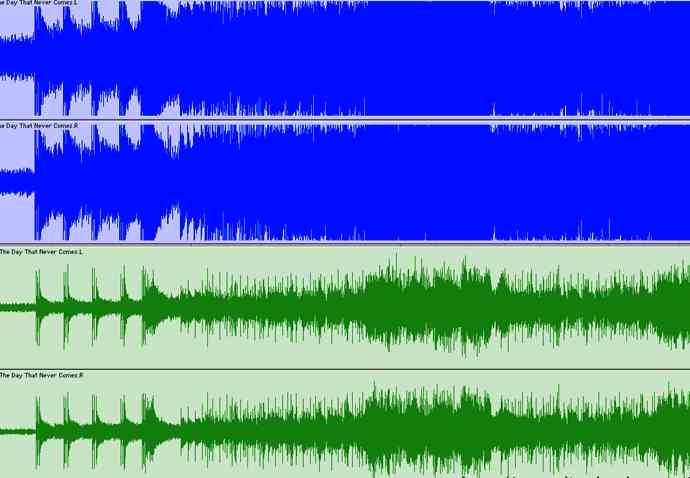What is Mastering?
 Mastering is an elusive and often misunderstood term in recording lexicon. For some, it means just making the song A.L.A.P. (As Loud As Possible), but this can completely destroy the mix you've worked so hard for. For others, mastering is a minor adjustments to final mixes that can subtly enhance the songs and make an album work as a whole. I prefer to favor the latter and get other sonic surgery done while mixing.
Mastering is an elusive and often misunderstood term in recording lexicon. For some, it means just making the song A.L.A.P. (As Loud As Possible), but this can completely destroy the mix you've worked so hard for. For others, mastering is a minor adjustments to final mixes that can subtly enhance the songs and make an album work as a whole. I prefer to favor the latter and get other sonic surgery done while mixing.These minor adjustment can include equalization, compression, expansion, reverb, fades, stereo widening or narrowing, limiting, and dither.Each process has its advantages and drawbacks which can in turn help or hurt your well-crafted mix.
Mastering is not a time to rethink your mix or try to fix balance issues. That should all be done before you get to the mastering stage.
Compression in Mastering
 As with any artistic or musical work, the sound is up to you, but here are a few guidelines if you want to keep the quality of your work.
As with any artistic or musical work, the sound is up to you, but here are a few guidelines if you want to keep the quality of your work.Don't OVER-COMPRESS: Too much compression leaves no dynamics in a song and can ruin the sound faster than anything else. Over-compression often results in tracks that have no punch and sound very flat and boring.
Use multiple stages of compression: If you really want the compressed sound and loud sound without losing dynamics of your mix, try using compression in steps. First run your mix through a gentle compressor with the attack and release times set high, threshold set low, and the ratio low, about 1.2:1. After this, send it through another, with a bit faster attack time and slightly more ratio, perhaps 1.5:1. Repeat this process until you are satisfied with your sound. Then, you can put a limiter on it if you need to, but then again, only very gentle limiting is needed at this point because you have taken care of many of the sonic qualities you were after.
Use parallel compression: If you want to use compression, but not alter the transient peaks of the recording, this technique can work wonders. First, make a duplicate of the track you are mastering. Next apply compression to the duplicate track. Here is where you can go crazy with the compressor. The ratio can be anywhere from 3:1 to 50:1 depending on your material. This track should sound prettty flat compared to the uncompressed one. The idea is to really compress this track so when you mix it with your original mix it helps fill out the lower level material, but leaves the peaks and punch in the original track. This leads to a higher perceived loudness without squashing the sound down from the top. Instead the sound is being pushed up from the bottom and met with the top, producing a full and dynamic master.
Upload and Win!
Congratulations to Eric Marches, winner of last month's contest.
When you order drum tracks and upload songs to your account between now and April 25, you will be automatically entered to win a FREE drum track. You can also enter by leaving a comment below.
Next month we will talk about choral editing techniques.